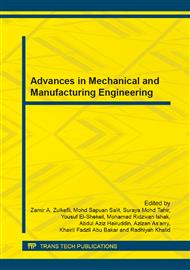p.525
p.533
p.538
p.543
p.549
p.555
p.560
p.566
p.572
Correlation between Welding Parameter and Bead Geometry of Flux Cored Arc Welding (FCAW) in Horizontal Position (2F)
Abstract:
A robotic system can convert the semi-automatic Flux Cored Arc Welding (FCAW) to an automatic welding system. The critical requirement in automated welding process is that the optimal welding parameter has to be set before welding start. These input welding parameters cannot be easily guessed unless one has the knowledge. Only very specific range of heat input that produces quality weld deposition. The correlation between the heat input and fillet weld bead can be displayed in a unique trend-line graph. Mathematical formulas that match the trend-line profile can be used to create a prediction calculator that displays the digital values of weld bead geometry when welded at a specific range of heat input. Small Mean Absolute Deviation between predicted and measured geometry means good prediction accuracy. With this correlation chart, the welding parameter for quality weld bead can be selected and the geometry of FCAW weld deposition in 2F position can be predicted accurately without trial and error.
Info:
Periodical:
Pages:
549-554
Citation:
Online since:
June 2014
Price:
Сopyright:
© 2014 Trans Tech Publications Ltd. All Rights Reserved
Share:
Citation:


